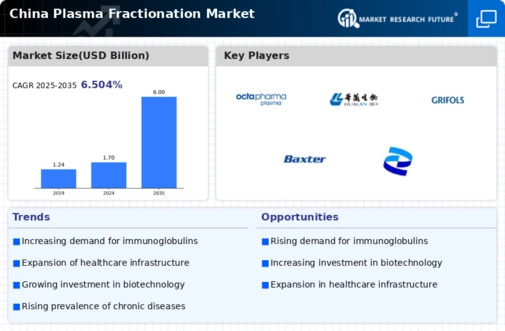The China Plasma Fractionation Market has been witnessing significant growth due to the increasing demand for immunoglobulin products and rising awareness related to plasma-derived therapies. With a vast population and a developing healthcare infrastructure, the market presents numerous opportunities for both domestic and international companies. The competitive landscape is characterized by the presence of established players and new entrants striving to enhance their market positions through innovation and strategic alliances. The growing aging population in China, alongside the prevalence of chronic diseases, is propelling the need for plasma derivatives, leading to intensified competition among key market participants.
Octapharma's presence in the China Plasma Fractionation Market is notable as the company continues to position itself as a leader in developing and providing high-quality human protein products. With a strong emphasis on research and development, Octapharma has been able to deliver a range of innovative plasmapheresis and immunotherapy products that cater to various medical needs. The company has built a robust distribution network throughout the region, gaining a competitive edge through its commitment to quality and regulatory compliance.
Additionally, Octapharma leverages its global expertise and local knowledge to adapt its offerings to meet the specific requirements of the Chinese market, which strengthens its foothold in this rapidly evolving sector. Hualan Biological Engineering has emerged as a significant player in the China Plasma Fractionation Market, focusing on the production of immunoglobulins, coagulation factors, and other plasma-derived products. The company is known for its strong operational capabilities, modern production facilities, and dedication to research and development.
Hualan has established a commendable market presence through strategic collaborations and partnerships aimed at enhancing its product range and increasing its distribution channels within China. Strengthened by a solid pipeline of products and a commitment to quality, Hualan is well-positioned to capitalize on the growing demand for plasma-derived therapies. The company's strategic mergers and acquisitions have further bolstered its capabilities, enabling it to expand its market share while continually improving its service offerings in the competitive arena of plasma fractionation.
















Leave a Comment